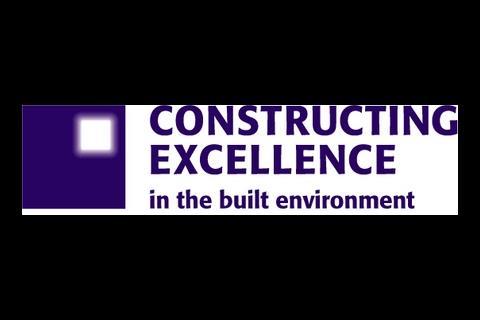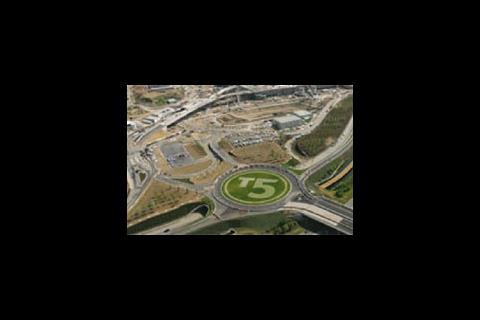In the first of a series of sustainable case studies submitted by Construction Excellence, the body assesses the work carried out on the recently completed Terminal 5 project with 97% of its waste material recycled or recovered
Heathrow is the world’s busiest airport so the development of Terminal 5 has been one of Europe’s most ambitious construction schemes with 16 major projects and a further 147 sub projects that will help transport some 30 million passengers every year.
Key achievements include the consideration of waste during design, construction and into operation of Terminal 5 which enabled the successful implementation of the waste hierarchy. In the end over 97% of waste material was recycled or recovered.
Reduced design
Design teams adopted the principles of standardisation in design, pre fabrication and modularisation, dramatically reducing waste generated during construction and maximising efficiencies in material use and delivery.The innovative ‘just in time’ logistics strategy adopted at T5, and on site housekeeping practices such as designated storage areas and segregated vehicle and pedestrian routes ensured that materials were delivered to the work place as they were needed, and not stored on site.
This reduced the amount of material damaged on site, and so reduced waste. The proactive logistics strategy also reduced the over-ordering of materials. Typically on a construction site, this can account for 10% of materials ordered, which then often end up in a skip unused.
BAA worked with suppliers to reduce the amount of packaging delivered to the T5 site. To ensure buy in, sustainability workshops were run for suppliers focusing particularly on reducing packaging waste.
Other steps were taken to reduce waste from the outset:
• All suppliers were encouraged to reduce packaging as far as possible and choose reusable materials to package their products.
• Where packaging is unavoidable suppliers were encouraged to take back the packaging they supplied for reuse.
• Agreements with the cable suppliers enabled cable drums to be returned to the supplier for reuse.
• Standard specifications for products such as paint enabled them to be ordered in large quantities, thus reducing waste and enabling large packaging to be returned e.g. ICI Dulux paint cans were returned to the supplier.
On-site consolidation of waste using compactors and roll packers, whilst not reducing the weight of waste significantly reduced the volume of waste sent off site, reducing the number of vehicle movements. Consolidation of hazardous materials during construction significantly reduced the transport of these materials.
Reusing waste material
BAA was committed to reusing waste materials on T5 where possible to reduce waste sent to landfill, to cut down on vehicle movements and reduce carbon emissions.Key achievements include:
• Waste soil, topsoil and other aggregates processed on site under a waste management licence exemption and reused in the construction.
• 300,000 tonnes of waste concrete and demolition material from T5 crushed by a designated team and reused on site.
• Biopiles used to treat the contaminated soils. Aerating the soils promoted the natural bacterial activity to break down the hydrocarbon. The clean soil was then reused on site.
• Excavated inert soils and clays used as backfill and for landscaping.
• Multiple use of temporary works e.g. shuttering used several times over, and then broken up and timber used for protection of finished works.
• Waste arising from road sweeping activities processed on site through a series of oscillating screens, filters and belt presses to remove solids and clays for reuse, with the cleaner water then disposed of. A mobile dewatering plant operated a similar system on a small scale, processing silty water in situ across the site.
• A materials take back scheme run by the on site market place, made surplus products and materials from one part of the project available to other project teams.
• Lengths of cable too short to be of use to the permanent systems installation team were made available to the logistics team for use in the temporary systems on site.
• Surplus paint of good quality was made available to local community projects through the Community Re:Paint initiative.

Recycling material
Where possible designated skips were provided for general, wood, metal and cardboard waste to encourage segregation for recycling. Waste cable and plasterboard were also segregated for recycling and in the offices, paper was collected through a desktop recycling box scheme. General waste was further processed and sorted by the waste contractor, who typically recycled 87% of the waste they processed.Specific recycling initiatives include:
• Temporary site drainage – high density polyethylene pipe recycled by a specialist contractor – EWMS (Express Waste Management Services)
• Biodegradable waste from the on site canteens was collected separately so that it could be composted in a biogas plant.
Hazardous Waste
Segregation of the hazardous waste stream was undertaken at the workface by the project teams who separated out aerosols, paints, solvents and other hazardous waste into designated hazardous waste drums. These were collected by the hazardous waste contractor Envirogreen and sorted and consolidated on site prior to collection.Decanting of liquid wastes, such as paints, allowed contaminated packaging to be crushed on site with can crushers, significantly reducing the volume of hazardous waste.
Aerosol degassers punctured aerosol cans, removing any paint residues and rendering the can non-hazardous. The inert can was then recycled with the metal waste from site.
Weekly collections of oils and oil contaminated water facilitate recovery of the oil and its recycling to clean fuel oil. The segregation of other hazardous waste such as paints or solvents enabled recovery of the products for recycling, or for use as a secondary fuel.
Toolwash stations provided across the project ensured wash water contaminated with paints, grouts, solvents etc was adequately controlled and disposed of, in compliance with T5’s discharge consents and waste management procedures.
Contaminated water was collected in drums at the toolwash stations and discharged to foul sewer in accordance with the discharge consent. Only clean rainwater was allowed into the surface water drainage system, which discharged to a local lake.
Recycled content
BAA strove to include products with a high recycled content in the construction of the buildings and infrastructure. Over 80,000 tonnes of recycled and secondary aggregates were bought onto the project in addition to the crushed aggregates generated on site.This included crushed glass from local municipal recycling banks that was used in the construction of the site roads. Up to 30% of the concrete mix used in the construction of the buildings, taxiways and aircraft stands is pulverised fuel ash (PFA), a waste product from the power generation industry.
Using this recycled product and an innovative variable thickness concrete saved over 9,100 tonnes of CO2 emissions. Additional benefits of products such as these include cost savings and a higher quality product.
During construction a single waste contractor Ethos Recycling was appointed to centrally manage and collect all waste. This waste contractor, based in Uxbridge, typically achieves recycling or recovery of 87% of inert waste.
Remaining waste is either sent for waste for energy or landfilled. The contractor is committed to increasing these recycling rates. In addition 43% of hazardous waste (i.e. oils, solvents, mastics, fluorescent tubes) was typically recycled or recovered, facilitated by Envirogreen, the specialist hazardous waste contractor.
T5 achieved in excess of 97% recycling of the waste generated during construction as a result of the combination of the onsite recycling activities, and the recycling provided by the waste contractor Ethos Recycling.
Over 80% of waste, by weight, was recycled on site.
Disposing waste
T5 had two dedicated Rear End Loaders (RELs) and one skip lorry that collect waste from across the site.The waste was compacted in the RELs to ensure that each vehicle leaving site, leaves full. This saved over 6,500 vehicle movements. The vehicles were weighed on a weigh bridge on leaving site and again when arriving at the waste transfer facility to ensure compliance with waste legislation.
Waste contractor vehicles were badged to enable them to be identified by the local community. The community were encouraged to be vigilant and report any vehicles they suspect of not adhering to the correct procedure. Vehicle movements were also closely monitored using a GPS logging system.
In addition to the main terminal building, T5 consists of:
• Two satellite buildings (the second satellite building will open in 2010)
• 60 aircraft stands
• A new air traffic control tower
• A 3,800 space multi-storey car park
• The creation of a new spur road from the M25
• A 600-bed hotel
• The diversion of two rivers
• Over 13km of bored tunnel, including extensions to the Heathrow
Express and Piccadilly Line services.
Downloads
Heathrow T5 case study
Other, Size 0 kb
Postscript
Contractor: Laing O’Rourke -Client: BAA - Contract value: £4.3bn - Start date: April 2003






























No comments yet